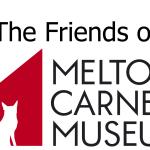On 6th April 1837 the Marquess of Waterford and his aristocratic friends, including several magistrates, a serving MP and a baronet, had spent the day at Croxton Park races, on their way back into Melton they were stopped at the toll house and refused entry as they were too drunk. The revellers then rode around the town and entered by a different route ending up at Lord Rokesby's Club in Burton End.
At 3 am, they returned to the toll house and boarded the windows and door shut. The toll keeper, awoken by the noise, tried to shoot them but in his dishevelled state he forgot to load any powder into his gun.
The revellers then took pots of red paint and proceeded to liberally splash doors and windows along Sherrard Street, they also stole door knockers, smashed flower pots, threw the Red Lion Inn sign into the canal, and tried to turn over a caravan in which people were sleeping. Once in the Market Place they covered anything they could reach in red paint, even climbing on each other's' shoulders to attack the white swan high up on the front of the White Swan Inn. When the town watchman tried to stop them, he was covered in red paint too!
One of the friends of the Marquess was arrested and taken to the local gaol, and the Marquess succeeded in breaking him out. It took nearly 18 months to bring the case against the Marquess and three other men before the court, they were each fined £100, for their night of painting the town red.
Whether this is the origins of the phrase 'painting the town red' is contested. The earliest written record comes from Kentucky USA in 1881.
Melton Young Researchers
The film at the top of this page was created as part of a project with the Melton Young Researchers, a group of volunteers at Melton Carnegie Museum. The group researched, wrote the script and acted in a film produced by Pudding Bag Productions.
In the film, you can discover what actually happened when the Marquess of Waterford painted the town red by watching a dramatic re-enactment of evidence given at his trial. Watch the film, and make up your mind about whether or not the Marquess was guilty.
The project was supported by Arts Council England and Museum Development East Midlands.


